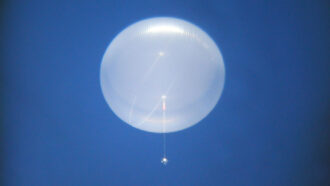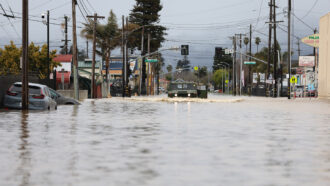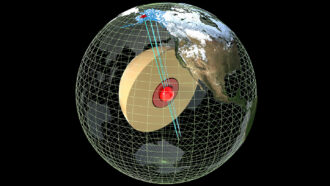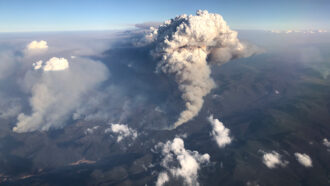
Carolyn is the Earth & Climate writer at Science News. Previously she worked at Science magazine for six years, both as a reporter covering paleontology and polar science and as the editor of the news in brief section. Before that she was a reporter and editor at EARTH magazine. She has bachelor’s degrees in Geology and European History and a Ph.D. in marine geochemistry from MIT and the Woods Hole Oceanographic Institution. She’s also a former Science News intern.

Trustworthy journalism comes at a price.
Scientists and journalists share a core belief in questioning, observing and verifying to reach the truth. Science News reports on crucial research and discovery across science disciplines. We need your financial support to make it happen – every contribution makes a difference.
All Stories by Carolyn Gramling
-
 Climate
ClimateThere’s good and bad news with California’s electric vehicle program
The electric vehicle program is reducing carbon dioxide emissions but also shifting the pollution burden to the state’s most disadvantaged communities.
-
 Tech
Tech50 years ago, a balloon circumnavigated the world for science
A 1973 high-altitude flight kicked off an era of useful stratospheric balloon science. Some scientists worry that heightened concerns over alleged spy balloons might hamper that.
-
 Climate
ClimateBy flying over atmospheric rivers, scientists aim to improve forecasts
Drenching atmospheric rivers are slamming the U.S. West Coast, bringing needed water but dangerous flooding. Here’s how scientists study these storms.
-
 Earth
EarthEarth’s inner core may be more complex than researchers thought
Seismic waves suggest that Earth has a hidden heart, a distinct region within the solid part of the planet’s core.
-
 Climate
ClimateHow wildfires deplete the Earth’s ozone layer
Scientists detail the chain of chemical reactions that occur when wildfire smoke enters the stratosphere.
-
 Paleontology
PaleontologyInsect bites in plant fossils reveal leaves could fold shut millions of years ago
The 252-million-year-old fossil leaves have symmetrical holes, which suggest an insect bit through the leaves when they were folded.
-
 Earth
EarthWhat to know about Turkey’s recent devastating earthquake
Science News spoke with U.S. Geological Survey seismologist Susan Hough about the fatal February 6 earthquake near the Turkey-Syria border
-
 Chemistry
ChemistryThese chemists cracked the code to long-lasting Roman concrete
Roman concrete has stood the test of time, so scientists searched ruins to unlock the ancient recipe that could help architecture and climate change.
-
 Earth
EarthRare earth mining may be key to our renewable energy future. But at what cost?
We take you inside Mountain Pass, the only rare earth mine in the United States.
-
 Climate
ClimateExtreme weather in 2022 showed the global impact of climate change
Heat waves, floods, wildfires and drought around the world were exacerbated by Earth’s changing climate.
-
 Paleontology
PaleontologyMysterious ichthyosaur graveyard may have been a breeding ground
Some 230 million years ago, massive dolphinlike reptiles gathered to breed in safe waters — just like many modern whales do, a study finds.
-
 Space
SpaceNASA’s Juno spacecraft’s mission has lasted longer than expected
NASA’s Juno spacecraft continues to send back revealing new close-ups of Jupiter and its closest moons.